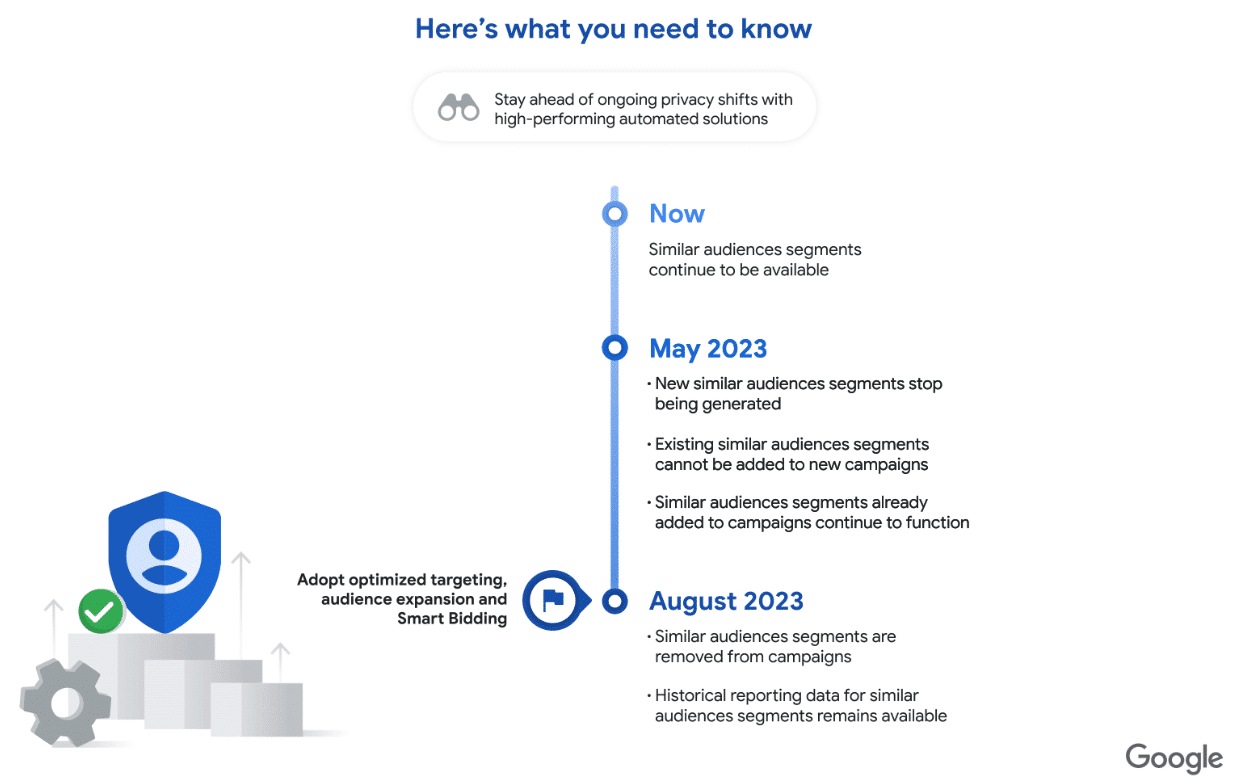Is Google planning to do away with lookalike targeting this year?
The answer is sort of. Currently, Google offers something called Similar Audiences, which is their version of lookalike targeting. Lookalike audiences are targeting segments that begin by using a first-party data file, (i.e current customers) and then letting systems like Google or Meta ingest that file and find users in their vast databases that “look like” the people from that original file. Not the physical characteristics, but similar digital profiles, activities, and lifestyles. For example, these systems may identify that current customers tend to fall within a particular income bracket, consume content about cooking, and work out several times a week. The systems will go out and find new prospects who share those same characteristics and group them into a targetable audience that can be used for advertising.
Parallel Path has long been touting the importance of first-party data for various reasons. It is a vital part of the marketing mix, especially when 3rd party cookies go away. First-party data enables more marketing tactics and possibilities such as lookalike targeting. First-party data is especially important for health & wellness brands and organizations where the ability to target via other means is more limited due to heightened privacy guidelines.
Back to Google – they’ve announced that they’ll be sunsetting Similar Audiences beginning in May 2023 and replacing them with different targeting options. These updates are coming in response to the ever-changing digital landscape and are Google’s latest effort to ensure more consumer privacy in their advertising platforms. Below is a visual timeline of when changes will go into effect.
With Similar Audiences being phased out over the coming months, what will the new options be? Google is urging advertisers to lean into other solutions, like Optimized Targeting, Audience Expansion, and Smart Bidding. Google help articles can sometimes be more complicated and confusing than necessary, so let’s break this down:
- Similar Audiences find people who look like those in existing audience segments (remarketing lists or current customers)
- Audience Expansion uses targeting parameters that you enter for a campaign, then finds additional segments that are similar to the existing criteria you already entered, therefore increasing the size of your potential audience.
- Optimized Targeting will find additional people who look like your current converters, even if they differ from your original targeting.
- Smart Bidding is an automated bid strategy that will dynamically adjust based on a multitude of market factors, with the ultimate goal of making sure that your campaigns are bidding most effectively to drive your desired outcome.
With every campaign, audience, and targeting type, a general best practice is that strategies work better if the systems are given some time to learn. The more data machines have, the better the algorithms can use that data to optimize toward the desired outcomes. Updates to Similar Audiences will begin going into effect in May 2023 with complete removal scheduled for August 2023. Now is the time to start adopting alternate approaches to ensure minimal impact. Tl;dr: Turn on Optimized Targeting for your Google prospecting campaigns!

